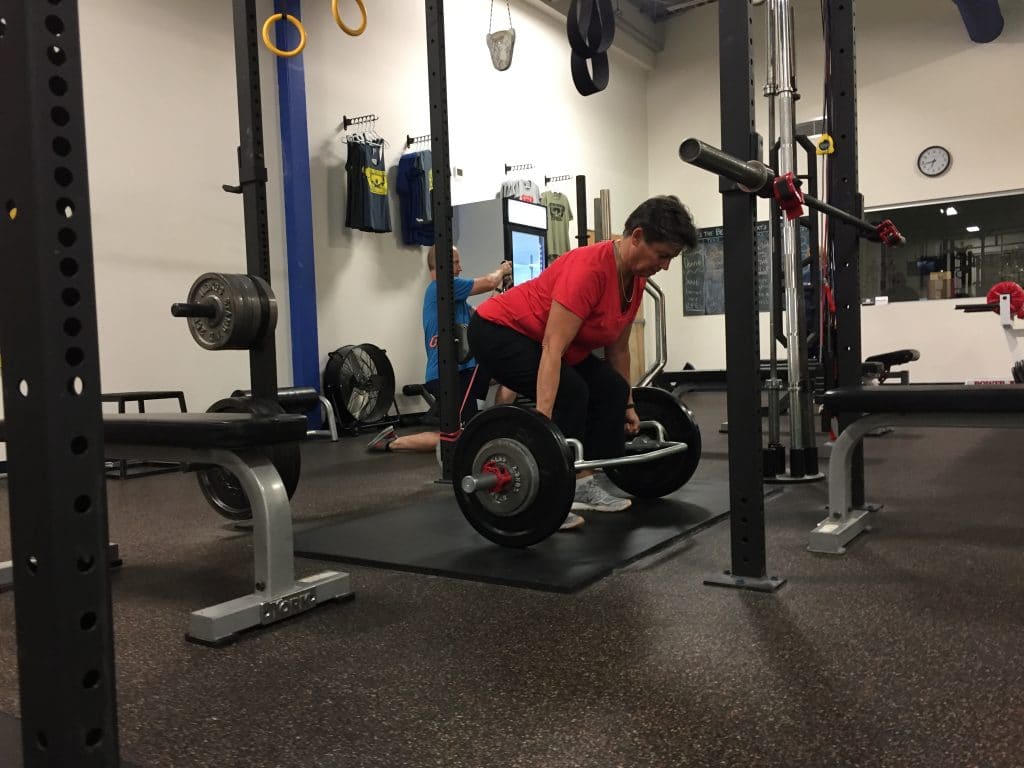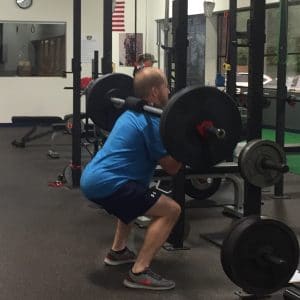Warm-ups that get the body moving are great—especially ones that start on the ground and progress to the feet. They prepare the body for a wide range of movements and build movement skills that carry us through life. And, they actually get us warm. But, when it comes to warming up for strength training, they are only one piece of the puzzle. We actually need to warm-up with weights as well—we can’t just jump into our strength training sets without acclimating ourselves to the movements and how they load our bodies.
So, let’s chat about that. Below you’ll find five reasons why you need to warm-up with weights before going full bore into your training.
First, A little Story
Let’s talk about a lady that I just made up for the sake of this article. Her name is Nancy. Nancy likes to go straight from her general warm-up—mobility drills, calisthenics, a bit of little cardio—straight into her heavy squats, or deadlifts, or other strength exercises. Now, what does “straight into” mean? It means putting the weight that she plans on using for her sets on the bar before doing any lighter sets that “warm her up” to that working weight.
So, when she starts her sets of squats, deadlifts, or whatever strength exercises she’s getting after, her body feels sluggish, achy, tight, and much weaker than at the end of her sets. Once she’s a few sets deep, she feels pretty good, but, those first few sets feel really hard. Nancy doesn’t perform as well as she could. And, even worse, every few weeks she gets a weird twinge in her back when she squats and deadlifts that causes her to miss a training day. No bueno.

Our friend Nancy was made up to illustrate a real point—lots of actual people deal with the issues that she does because they don’t warm-up with weights.
Okay, let’s jump in.
Reason #1: Weight Warm-ups Prep The Nervous System
Ever notice how the same weight feels “lighter” after a few sets with it? That’s because your nervous system acclimated to the work it was being asked to do. But that first set—it feels sluggish, doesn’t it? Well, warming up with a few lighter sets, and gradually increasing the weight, before jumping in with your working weight helps prep your nervous system and gradually prepares it to move the weight.
Reason #2: Weight Warm-ups Prepare Our Tissues
Muscles, tendons, and ligaments work to move and support our bones—but if they aren’t ready to do their jobs, and they’re given more work than they’re prepared for, they aren’t very efficient. This means our joints might not be as stable—potentially leading to an injury—and that our muscles won’t be able to “fire” as hard, meaning that your body won’t perform as well as it could have. Muscles that aren’t prepared for the stress of heavy weights also can work disproportionately hard, causing them to pull or twinge.
Reason #3: Weight Warm-ups Improve Performance
This reason is a combination of the first two—warming up with weights before getting into your actual sets helps you perform better during your sets. The nervous system, the muscles, the joints—they’re all better prepared for the work. And they reward you with improved performance for your warm-up efforts.
Reason #4: Weight Warm-ups Help You Pick The Day’s Training Weights
At BSP NOVA, our clients choose their weights each day based on something called Rate of Perceived Exertion—or, as it’s listed on their programs, RPE. This gets people to ask themselves: how hard did that weight make me work?
RPE in action: Let’s say the program calls for a 7-8 RPE. At the completion of a set, simply ask yourself:
“Hey sexy, on a scale of 1-10, how did that weight feel?”
And then you answer yourself (we recommend doing this in your head):
“That was about a 7.”
Great! Looks like you could potentially add a little more to the next set, finding an 8, if you’re up for a little challenge today.
 But it’s tough to get an accurate depiction of your RPE if you jump into your sets without any warm-ups because everything is going to feel heavier than it should. Remember all that nervous system prep stuff we talked about? That’s why. Warm-ups change your perception of the weights that you’re using because your body, like we said before, acclimates. So, you can more accurately judge how a certain amount of weight is affecting your body.
But it’s tough to get an accurate depiction of your RPE if you jump into your sets without any warm-ups because everything is going to feel heavier than it should. Remember all that nervous system prep stuff we talked about? That’s why. Warm-ups change your perception of the weights that you’re using because your body, like we said before, acclimates. So, you can more accurately judge how a certain amount of weight is affecting your body.
Warm-ups also give us a heads up when we shouldn’t be lifting heavy that day. If we choose a warm-up weight that normally feels relatively light, and it feels like seventeen tons of led-filled beanie babies (just go with it, it doesn’t have to make sense), then it’s probably a good day to dial things back in the name of recovery.
Reason #5: Weight Warm-ups Help Us Choose The Right Exercise
Let’s say that you start warming up. You choose a weight that’s normally a good starting point, but as you start moving with it you realize that you can’t maintain good form. Your body just feels “off.” This is a good indication that you need to choose an “easier” exercise that day. Let’s use squatting as an example. We’ll say that you had front squats planned, but you experienced all the stuff we just talked about. It means you’re probably not recovered, or your body just isn’t ready to front squat that day. That’s totally fine—there’s another solution that will fit your body better that day. You just have to take a positive step back and choose a less intense squat—like a goblet squat or a plate squat. You’ll still get your workout in without causing yourself unnecessary damage. And your warm-up gave you the info that allowed you to make a good decision.
Warm It Up!
Don’t just move from your general warm-up to your strength working sets, take the time to prep your body with some warm-up sets. If you’re not sure about how to do that, check back next week. We’ll walk you through a few examples of how to warm-up with weights.
